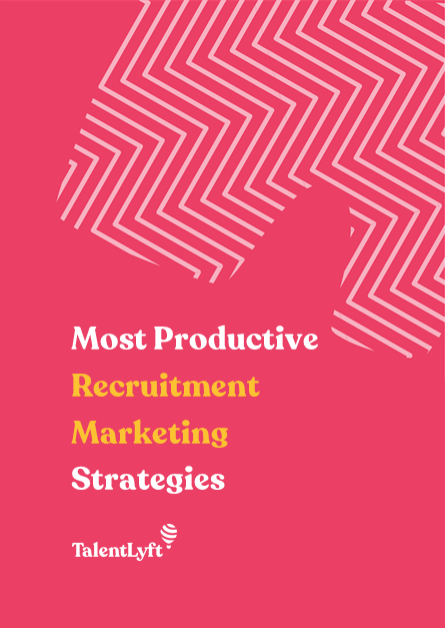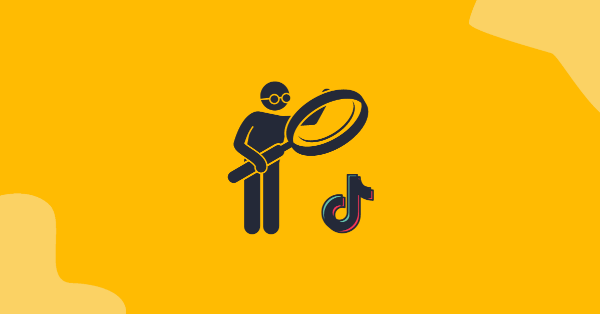
Welcome to the wonderful world of candidate journey mapping! In this step-by-step guide, you will learn how to create and use a candidate journey map to improve your whole hiring process and ensure the best results.
Welcome to the wonderful world of candidate journey mapping! In this step-by-step guide, you will learn how to create and use a candidate journey map to improve your whole hiring process and ensure the best results.
Candidate journey mapping is a process of creating a visual representation (map) of a candidate journey.
The aim of candidate journey mapping is to create a candidate journey map.
A candidate journey map is a visual representation of all the touchpoints candidates have with your company’s employer brand during different stages of their candidate journey.
Mapping a candidate's journey is a great way to improve your candidate experience and enhance your company’s employer branding strategy.
Creating a visual representation of your candidates' journey will help you to put yourself in your candidate’s shoes.
That way, you will be able to better understand their needs, wants and fears in different phases of their journey.
You will also gather the important information you can use to guide your recruitment marketing strategy.
You will learn exactly which type of content you should use to at every step of the candidate journey to successfully present your company’s employer brand across many different channels.
You will also know which channels work best so you can better allocate your recruitment resources.
As a result, you will be able to recruit the right people for your company faster and cheaper!
When starting with candidate journey mapping, it is important to understand 2 important elements:
During their candidate journey, job seekers go through 6 different stages:
All candidates go through all of these candidate journey stages.
However, because of multiple possible candidate journey touchpoints, each candidate has a unique candidate journey.
During each of 6 candidate journey stages, candidates can have multiple interactions with your employer brand and your people (your employees, recruiters, etc.), both online and offline.
This is where it gets interesting!
For example, a candidate may:
These different points of interaction that a candidate has with your Employer Brand are called touchpoints.
Here is how you can map your candidates’ journey in 5 easy steps:
The first thing you need to do is to determine whose candidate journey you are mapping.
In other words, you need to create your candidate persona.
➡️ Download our Guide for creating a candidate persona!
Candidate persona is the semi-fictional representation of your ideal job candidate.
This persona is formed by defining the characteristics, skills, traits, needs, goals, thoughts, feelings, opinions, expectations, and pain points of your perfect hire.
Here is our cheat sheet for defining candidate persona! 🙂
Defining your candidate persona will help you get a clear idea of a person whose journey you are mapping.
This is important because different candidate personas might have a completely different candidate journey!
For example, a young college graduate looking for an entry-level position might have a completely different candidate journey than a veteran or a highly experienced developer.
So first you need to choose one specific candidate persona you want to focus on.
Different stages that candidates go through are the cornerstone of your candidate journey mapping.
As we already mentioned, there are 6 stages of a candidate's journey:
These are the common behavior stages that all candidates go through.
At the basis of your candidate journey stages are actually candidates’ needs.
Each stage of a candidate's journey is powered by your candidates’ needs.
What are your candidates’ main wants and needs in each of the stages?
Which thoughts and feelings drive their behavior?
Here is the map of the main candidates’ thoughts in specific candidate journey stages:
And here is our cheat sheet! 🙂
Driven by their needs, candidates engage and interact with your company, employees and employer brand.
These interactions candidates have with your company are called candidate journey touchpoints.
At this step, your goal is to discover all the possible touchpoints your candidate persona can have with your company in a certain candidate journey stage.
This step may seem exhaustive at first because there are so many different touchpoints to consider...
Which is why I have a trick for you! 🙂
Put yourself in your candidate persona’s shoes.
With your candidate persona hat on, ask yourself the following questions:
It is even better if you can seek answers to these questions directly from your candidates:
Here is our cheat sheet to help you! 🙂
The next step consists of discovering where the touchpoints form the previous step occurred.
Look at the list of touchpoints and ask yourself where did these interactions happen? In what context? Through which channel?
This is a very important question because the same interaction can happen along many different channels.
For example, unhappy candidates who feel like they were treated poorly during the job interview can share their negative candidate experience through many different channels:
In other words, unhappy candidates can express their compliant through many different channels.
This why you need to generate a list of the channels on which previously detected touchpoints occur.
Here is our cheat sheet to help you get started! 🙂
Drumroll, please...🥁 It is the moment you've been waiting for! 🙂
It’s time to create a visual representation (map) of a candidate's journey!
In this step, you will gather all the information gathered in the previous steps and combine them into a visual map.
There are no wrong or right ways to do this.
Now is the time for you to get creative and organize your information in the way that works best for you and your team:
The choice is yours!
Important thing is that your visual map visually combines all relevant insights from complex data in a way that is simple to understand and easily digestible.
But just in case you need an inspiration, here is our candidate journey map template! 🙂

Now that you have your candidate journey map, it’s time to put it to good use and make the most of it! 🙂
Here is how to do it:
The candidate journey map you created is a great tool for analyzing your whole recruiting process.
Use it to analyze every step of your hiring process, from the first to the last touchpoint.
Your goal is to find how good (or bad) your company is at each specific touchpoint along the candidate's journey.
Do your research:
➡️ Download our Checklist of the most important hiring metrics!
By conducting thorough research you will gain insights into the strengths and weaknesses of your hiring process.
You’ll be able to identify good practices and bottlenecks.
Now it is time to act!
Put all your research findings into practice and improve the bottlenecks you discovered.
Make sure you set your priorities straight.
Determine the time frame and resources (people, technology, tools and budget) you will need to improve each specific candidate journey touchpoint.
Taaa-daaa! That’s it. 🙂
You are now ready to create your first candidate journey map. 🗺️
Good luck, have fun and if you have any questions or comments, feel free to ask us!
What is candidate journey mapping?
Candidate journey mapping involves creating a visual map of all the touchpoints a candidate has with a company's employer brand during their application process.
Why is it important to map a candidate's journey?
Mapping a candidate's journey helps improve the candidate experience, enhances employer branding, and guides recruitment marketing strategies.
What are the key stages of a candidate's journey?
The key stages include Awareness, Consideration, Interest, Application, Selection, and Hire, each representing different phases of a candidate's interaction with the company.
How can understanding candidate journey touchpoints improve recruitment?
By understanding the different touchpoints, companies can better meet candidate needs at each stage, improving the overall candidate experience and recruitment effectiveness.
What are the benefits of using a candidate journey map in recruitment?
A candidate journey map aids in analyzing and improving the recruitment process, ensuring that the company effectively attracts and hires the right candidates efficiently.












